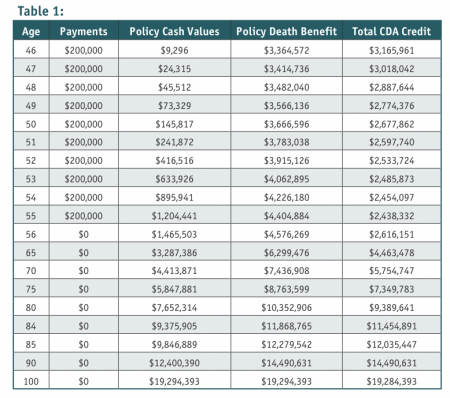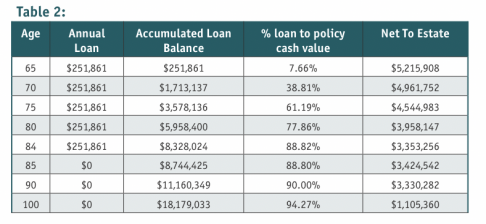How Business Owners Can Reduce Their Corporate Tax Bill Despite New Federal Budget
 Although February's federal budget contained no major corporate or personal tax rate changes, it does penalize corporations with large amounts of investment income held internally, so-called passive income. In this area, the federal government is introducing measures that limit the benefit from the small business tax rate.
Although February's federal budget contained no major corporate or personal tax rate changes, it does penalize corporations with large amounts of investment income held internally, so-called passive income. In this area, the federal government is introducing measures that limit the benefit from the small business tax rate.
In Ontario, the small business corporate tax rate on the first $500,000 of business income is currently 13.5%, set to decrease to 12.5% in 2019. The corporate tax rate applied to business income in excess of $500,000 is taxed at the general business rate of 26%.
Under the federal budget changes, for a corporation earning more than $50,000 in passive investment income per year, eligibility for the small business tax rate would be reduced by $5 for every $1 earned. At $150,000 of passive investment income eligibility would drop to zero.
For example, if a corporation has $100,000 of passive investment income its limit to use the small business corporate tax rate will be reduced to $250,000 ($500,000 – {excess $50,000 x 5}). If the corporation has $200,000 of business income, it will not be impacted in making use of the small business tax limit. The full $200,000 will be taxed at the small business corporate tax rate. However, if the corporation has $325,000 of active business income, it will only benefit from the small business tax rate on the first $250,000 of its business income. The other $75,000 ($325,000 - $250,000) will be taxed at the higher corporate tax rate (according to a February 2018 document released by Manulife tax retirement and estate planning services).
Let’s look at a case study to see how Dr. Mary Jones reduced her corporate tax bill by transferring some of her taxable passive investment income to a tax-exempt permanent insurance investment vehicle that gave her tax-deferred cash value growth and a tax-free death benefit.
Dr. Mary Jones Current Situation
It’s been over 12 years since the government of Ontario changed the law to allow doctors to incorporate their medical practices. Dr. Jones, a family physician practicing in the province of Ontario incorporated her medical practice in 2006. In the past ten years, her income and investment earnings ranged from $200,000 to $325,000 per year, which includes investment income held in her professional medical corporation. Her corporation is generating a significant amount of excess cash flow each year and she retains a considerable portion of business profits within her corporation.
Over the years, she has been able to accumulate over two million dollars in savings in her corporate account. These funds are currently invested in traditional investments including GICs, bonds, dividend-paying stocks, preferred and common shares. Every year her corporation pays the applicable tax on income generated from these passive investments. Interest and foreign dividends are taxed at 50.17%, capital gains at 25.08% and dividends at 38.33%.
With the new federal budget changes, she is worried about going over the $50,000 threshold, which would limit her ability to benefit from the small business corporate tax rate. She’s looking for an effective strategy to transfer out some of her taxable corporate assets to a tax-advantaged asset. The solution is to set up a corporate-owned, tax-exempt, permanent insurance plan. Her medical professional corporation would own and pay for the plan and be named as beneficiary. Using corporate dollars to pay for the insurance premiums was an attractive opportunity for her.
Dr. Jones purchased the insurance plan with an annual premium of $200,000. She simply re-allocated $200,000 for 10 years from her corporate investment account to fund her new insurance plan. Her insurance plan consists of a savings element (policy cash values) and a death benefit.

(Rates obtained from highly-rated Canadian insurer whole life current dividend scale, and are not guaranteed, increases in policy cash values and policy death benefit will vary depending on the company’s future dividend scale).
By moving $200,000 every year for 10 years from her taxable investments to her tax-exempt insurance policy, this reduces the amount of taxable passive income her corporation is earning, by $100,000 (currently her other passive investments are averaging a 5% annual rate of return).
On death, the full amount of the death benefit, less the life insurance policy’s adjusted cost basis, creates a credit to her corporation’s capital dividend account (CDA), which can be used to create tax-free capital dividends. This strategy creates an immediate tax-free CDA of $3,165,961 for her beneficiaries. (The CDA credit is unique to corporate-owned life insurance. This is a notional account and appears on a company’s financial statement, which will have a significant benefit for owners of Canadian controlled private corporations. The balance in the CDA can be paid out to shareholders as a capital dividend and thus be exempt from tax. The death benefit of a corporate-owned life insurance policy is one item that can be credited to the CDA tax-free).
Her corporate insurance policy will also build up a tax-deferred savings plan of $3,287,386 by the time she reaches 65 years of age. There is no tax payable on the growth of the policy’s cash value as long as it remains in the policy. This helps reduce her corporate tax payable, resulting in greater asset growth.
Tax Savings Through Collateral Assignment
If Dr. Jones decides to access the policy’s cash values to supplement her retirement income, her corporation could collaterally assign the insurance policy to a third party lender (usually a bank) for a series of tax-free loans. Currently the Canada Revenue Agency (CRA) does not treat collateral loan proceeds as income, so this amount potentially is tax-free to the borrower.
(Note: Either the corporation or a shareholder may borrow money from a bank using the insurance as collateral. Tax consequences will vary depending on the structure (i.e. shareholder borrowing vs. corporate borrowing). It’s important that the business owner’s insurance advisor along with other business professionals (i.e. accountant) be involved when making these decisions).

Using a 5% collateral loan interest rate, and the insurance company’s current dividend scale, she could start withdrawing $251,861 at age 65 every year from her policy until age 84. On her death, the policy death benefit pays the outstanding loan plus accumulated interest. Any amount of death benefit that remains will be paid to her corporation.
Conclusion
Despite the new federal budget, corporate-owned insurance continues to be an excellent tax-advantaged investment option for Canadian business owners. Investing in corporate-owned insurance not only reduces the tax a company pays on its passive investment earnings, but the death benefit immediately increases the value passed on to heirs, since most of it flows tax-free through the corporation’s CDA.
If Dr. Jones does nothing and leaves all her corporate assets in traditional corporate investments, then on her death the CRA will consider this a deemed disposition, resulting in at least one third of her business assets ending up going to CRA, if there is no spousal rollover provision.
If the intention is to reduce your corporate tax bill, manage risk, and leave most of your corporate assets to immediate family members, then a tax-exempt insurance policy will continue to be an important part of an overall estate plan.
Rino Racanelli, Independent Insurance Advisor, Toronto, ON
Phone: 416-880-8552
Email: racanelli@sympatico.ca
Website: www.CorporateTaxShelter.ca

